I have a table of reference stock symbol that looked like this
I want to investigate the price change around each "showdate".
For exmaple, I want to add 2 new rows for one existing row, with a showdate -1 and + 1 day, essentially inflating the table 3 times. Leaving all other columns empty except making sure the symbol is added correctly.
That is:
for first row ZTS 2017-01-09 Buy
I want to add 2 more rows ZTS 2017-01-08
ZTS 2017-01-10
For the next row ZTS 2016-11-02 Buy
add 2 more rows ZTS 2016-11-01
ZTS 2016-11-03
etc...
I read about add_rows() but the function wont let me. and this post doesn't solve it either Add rows to a data-frame based on values in one of the columns
Can someone do this? Usually I deal only with columns.....
>dput(head(sanitised))
structure(list(Company = c("Agilent Technologies ", "Agilent
Technologies ",
"Agilent Technologies ", "Agilent Technologies ", "Agilent
Technologies ",
"Alcoa "), symbol = c("A", "A", "A", "A", "A", "AA"), showdate =
c("2021-08-18",
"2020-04-16", "2017-11-17", "2017-03-23", "2016-05-13", "2016-10-
07"
), call = c("Buy", "Buy", "Buy", "Buy", "Buy", "Buy"),
show_segment = c("Guest Interview",
"Guest Interview", "Discussed Stock", "Featured Stock",
"Discussed Stock",
"Discussed Stock"), call_price = c("$163.02", "$78.75", "$68.79",
"$53.18", "$42.49", "$31.37"), current_returns = c("+0.0%",
"+0.0%",
"+0.0%", "+0.0%", "+0.0%", "+0.0%"), day_7_returns = c("", "",
"", "+0.3%", "+5.7%", "-15.7%"), day_14_returns = c("", "", "",
"-0.1%", "", ""), day_30_returns = c("", "", "", "", "+6.8%",
"-19.7%")), row.names = c(NA, 6L), class = "data.frame")
